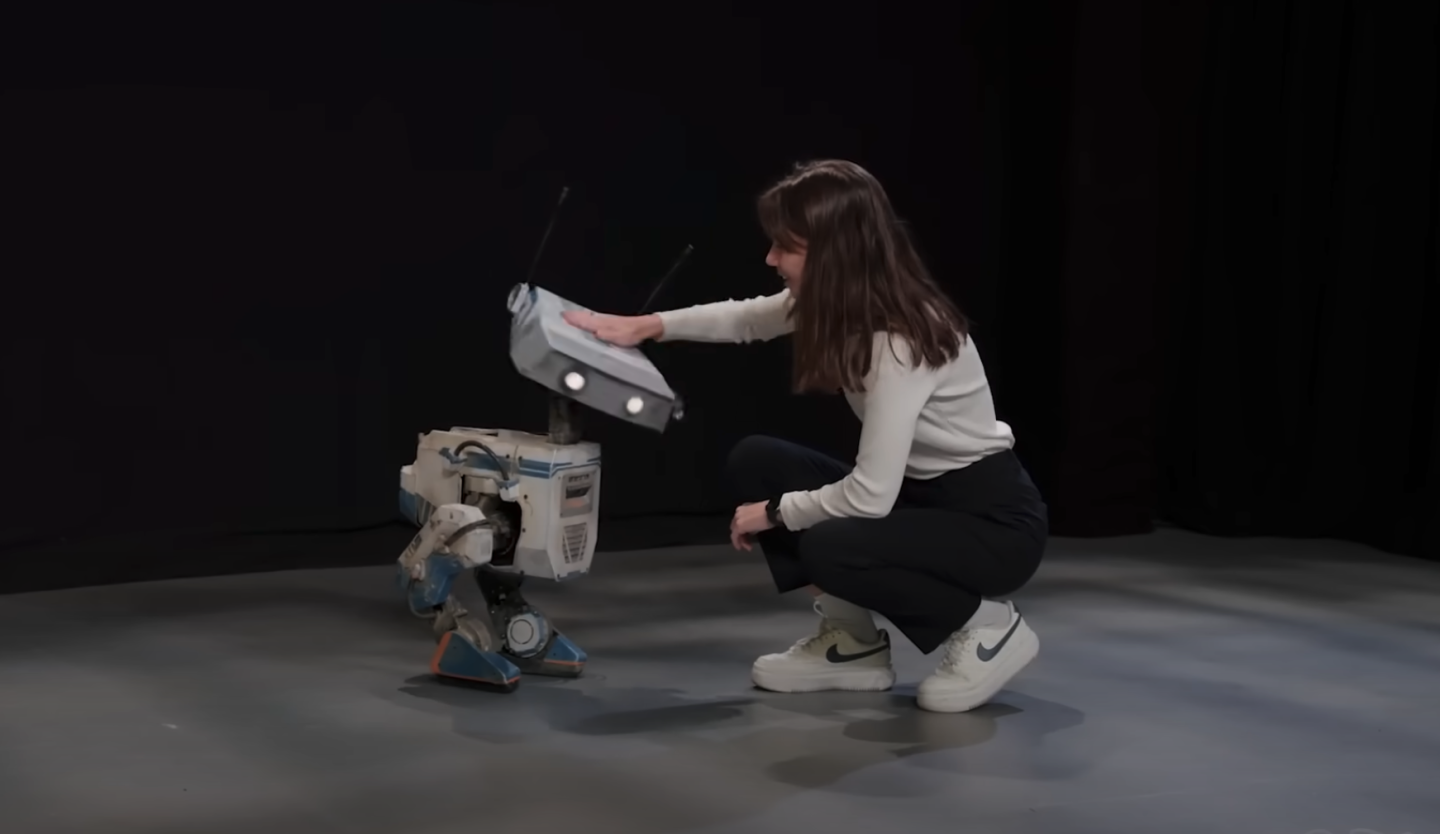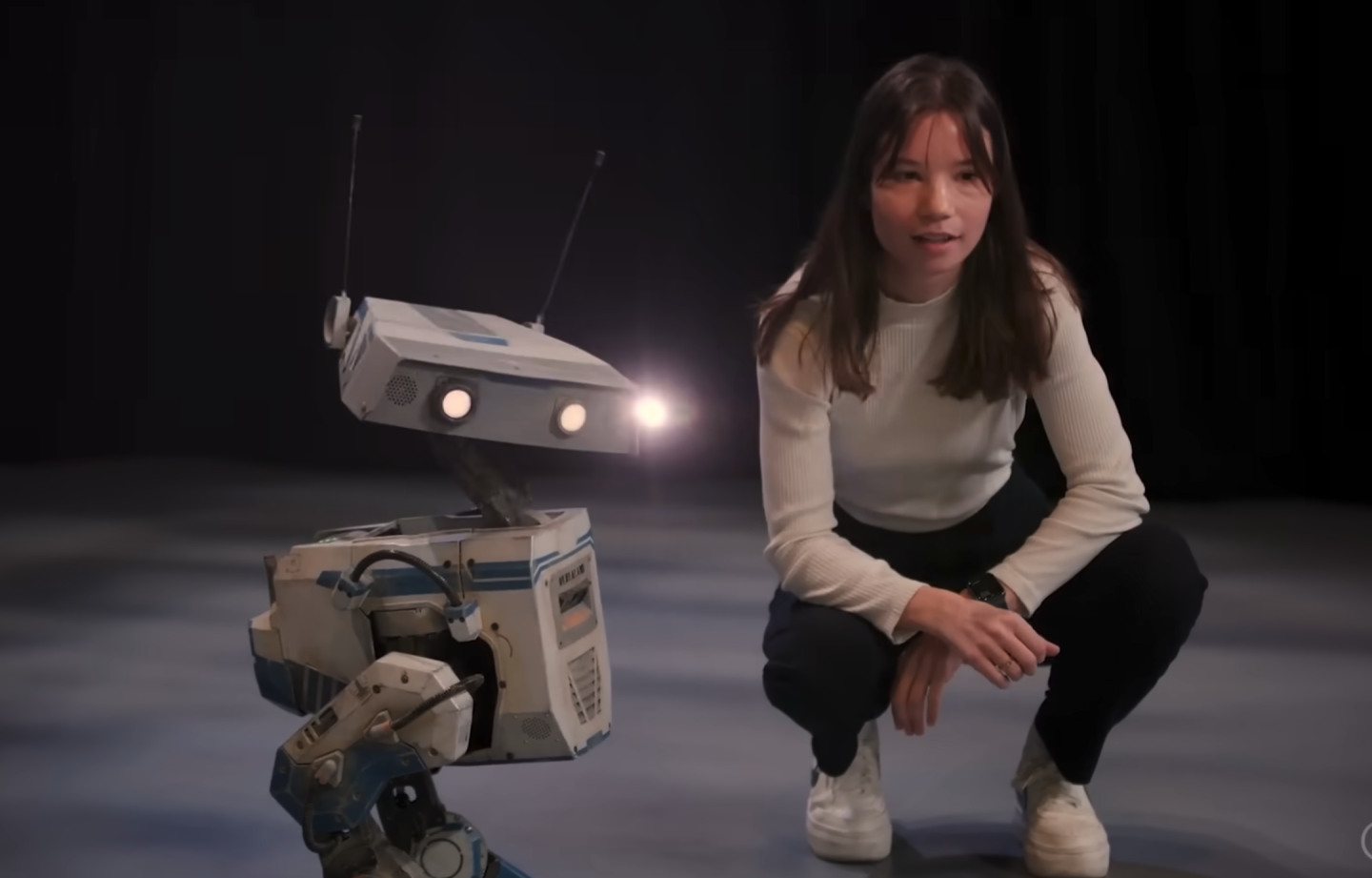Disney Research Hub has different priorities to other robot developers; its robots need to move effectively and efficiently – but also with a ton of style and personality. This super-cute biped, based on the BD-1 droid, is a perfect example.
BD-1, to the uninitiated, made its first appearance in Star Wars: Jedi Fallen Order, a terrific video game released in 2019. This bird-like biped, like many of the robots in Star Wars, was a curious, plucky and courageous little character, communicating mainly in R2D2-like bleeps and bloops. Riding much of the time on the main character’s shoulder, BD was a constant companion, helpful and cheery.
It was also superbly expressive, capable of communicating plenty with its body language, and this became a key part of the challenge for Disney’s roboticists as they began trying to bring the little droid to life.

Disney Research
As we discussed back in October 2023, the Disney Research team designed a new type of motion control system for this little fella, combining expressive animations with practical robotic considerations like balance and control commands in an effort to get the job done in style.
It’s not just for the sake of entertainment, either; Disney rightly reckons that its decades at the forefront of animated motion make it more or less the authority on how all sorts of machines should move to convey a range of different character traits, from inquisitive, happy-go-lucky excitement, as embodied in BD-1, to the commanding physical threat of Darth Vader, to the flowing grace of Snow White.
By designing a robotic motion system in which function and form share equal priority, Disney hopes to create robots that can operate extremely naturally around people, and that can build trust and connection solely through body language.
In a new video released a few days ago, the Disney Research team shows the current state and capabilities of the BD-1 lookalike robot, also demonstrating the remote control system through which the robot’s motion can be controlled while also puppeteering its expressive capabilities on the fly.
Design and Control of a Bipedal Robotic Character
It’s pretty phenomenal how smoothly the robot blends the artistic intent with the practicalities of bipedal motion, and just how beautifully embodied the little character is in these real-world robots. Certainly a refreshing break from the relentless, stilted pragmatism of most cutting-edge general purpose robots we’ve seen over the last couple of years – Disney could well be on its way to creating some incredibly compelling machines in the near future, that’ll tug human heart-strings like nothing else on the market.
Notable in the new video is the robot’s ability to maintain its ‘personality’ while stepping over a range of uneven and chaotic surfaces – which is just as well, because it doesn’t look like it could get back up if it fell over. Toward the end we also get to see things come together in some demonstration performances, including in interaction with humans, and it’s hard not to feel a little affection for the thing.

Disney Research
Disney hasn’t made it clear yet what its plans are for these robots; they’re certainly some of the most amazing animatronic devices we’ve seen to date, and we could definitely see them featuring in a live-action Star Wars show or movie at some point. Likewise, they’d be immensely popular with Disneyland visitors if they can handle the rigors of wandering around and interacting with crowds for a decent length of time.
But more importantly, Disney has found a way to parlay its animation expertise into the real world, bringing beauty to movement without compromising function and practicality. And we can’t wait to see how far that concept might go in the coming years.
Source: Disney Research
Source of Article
